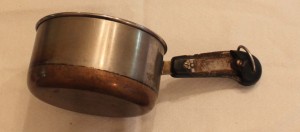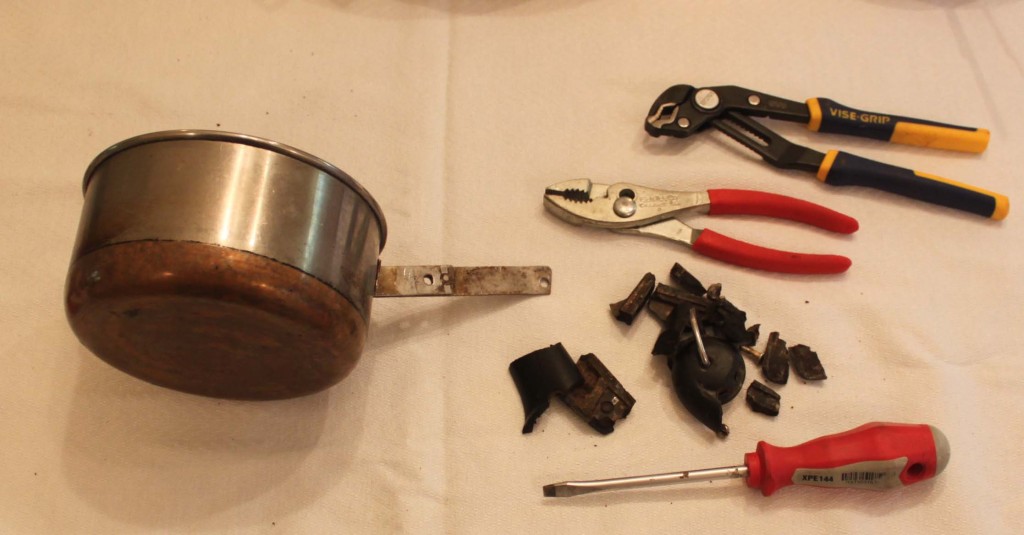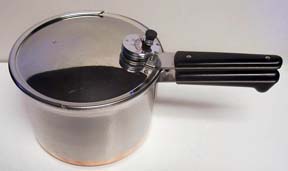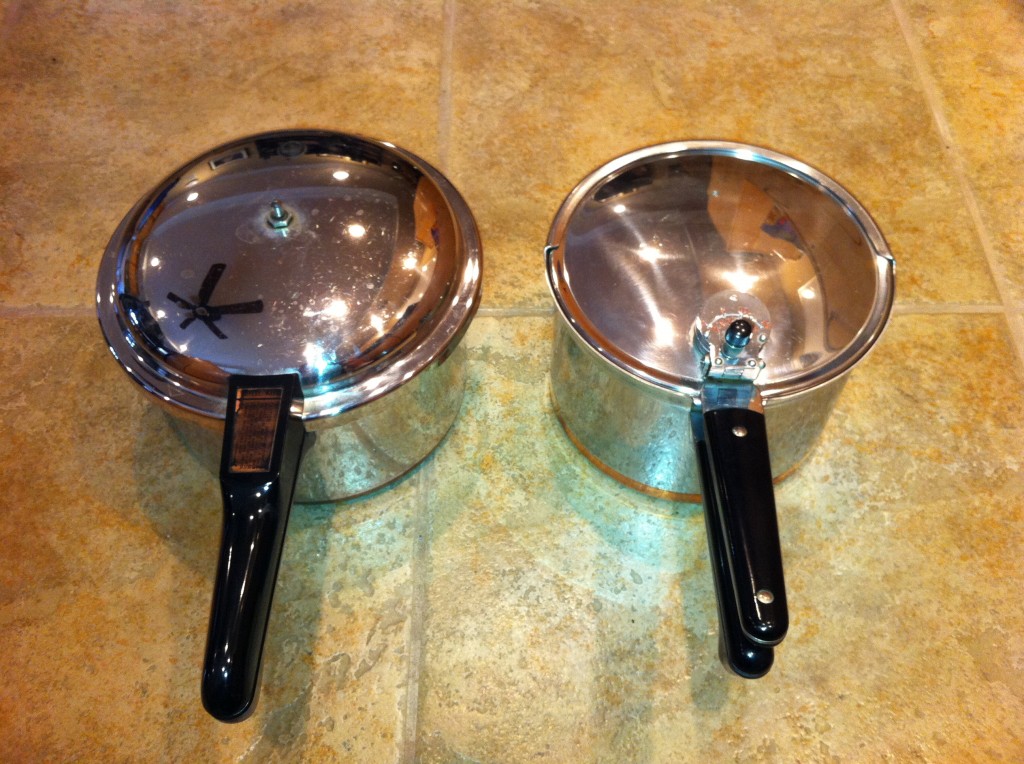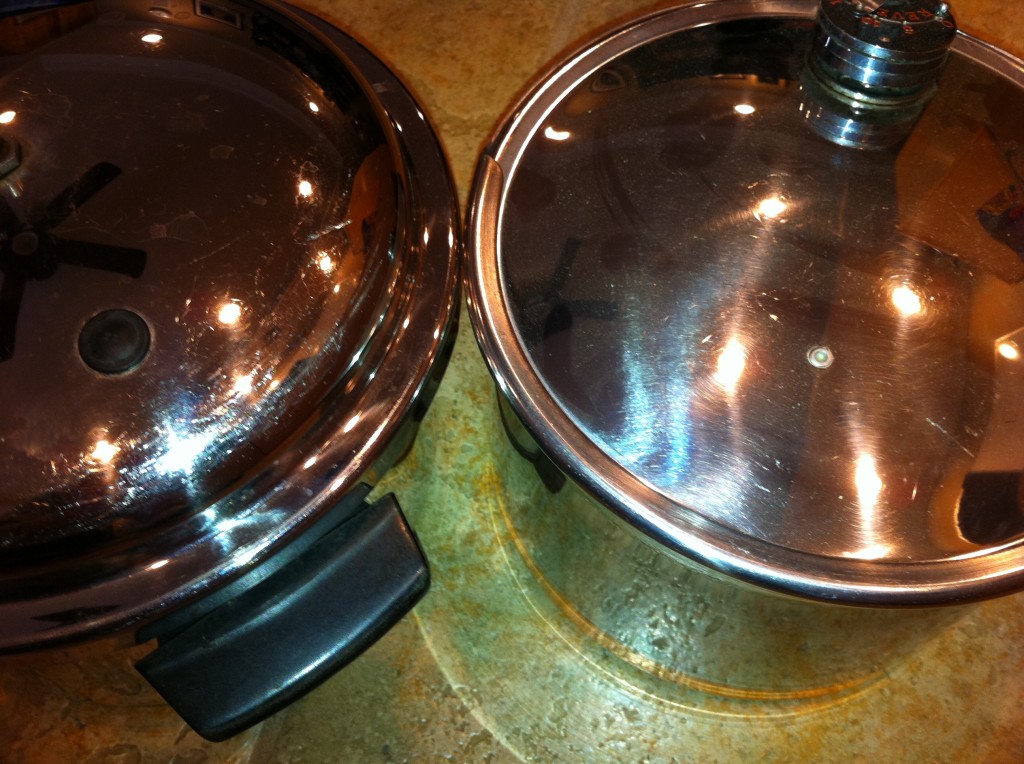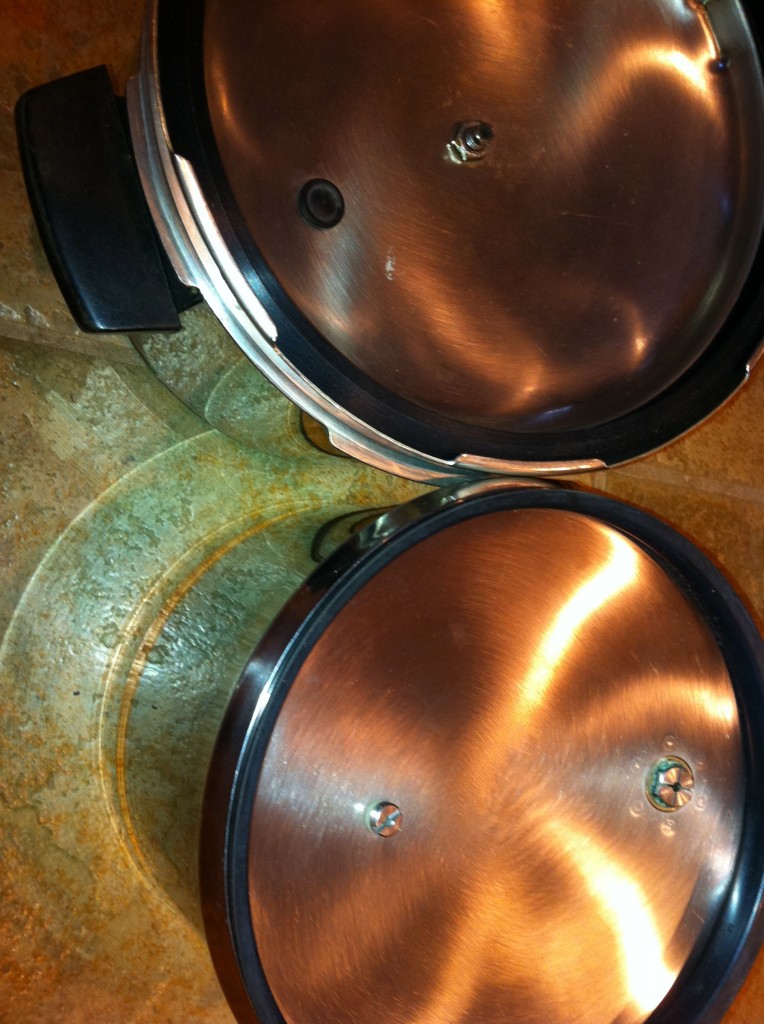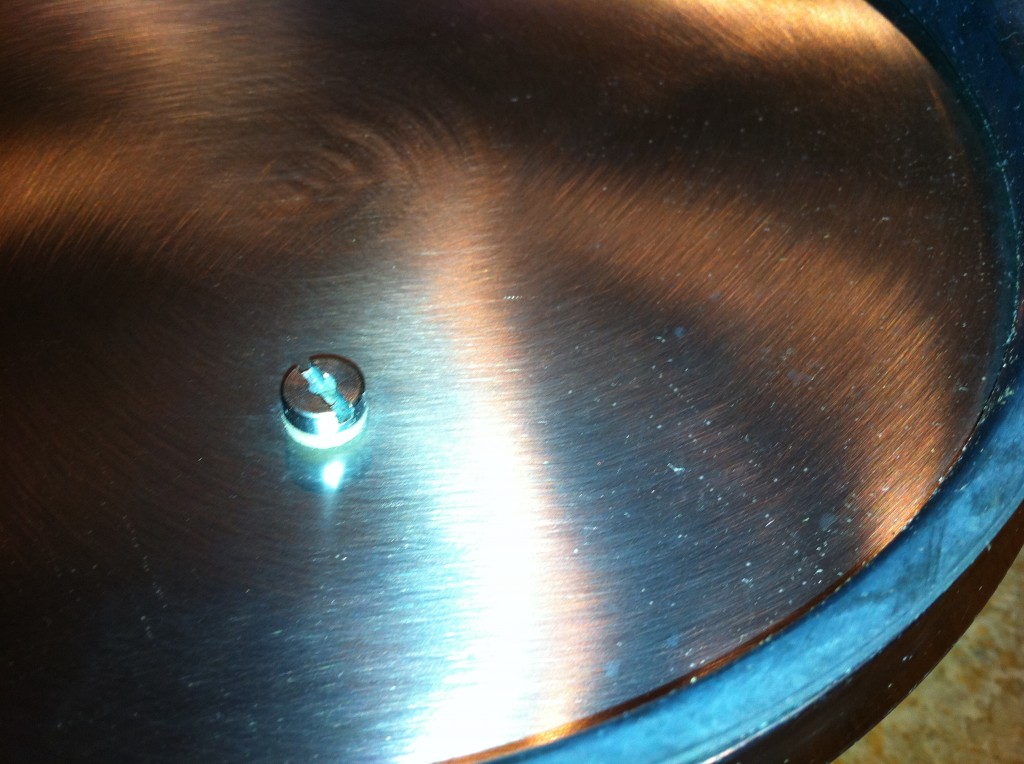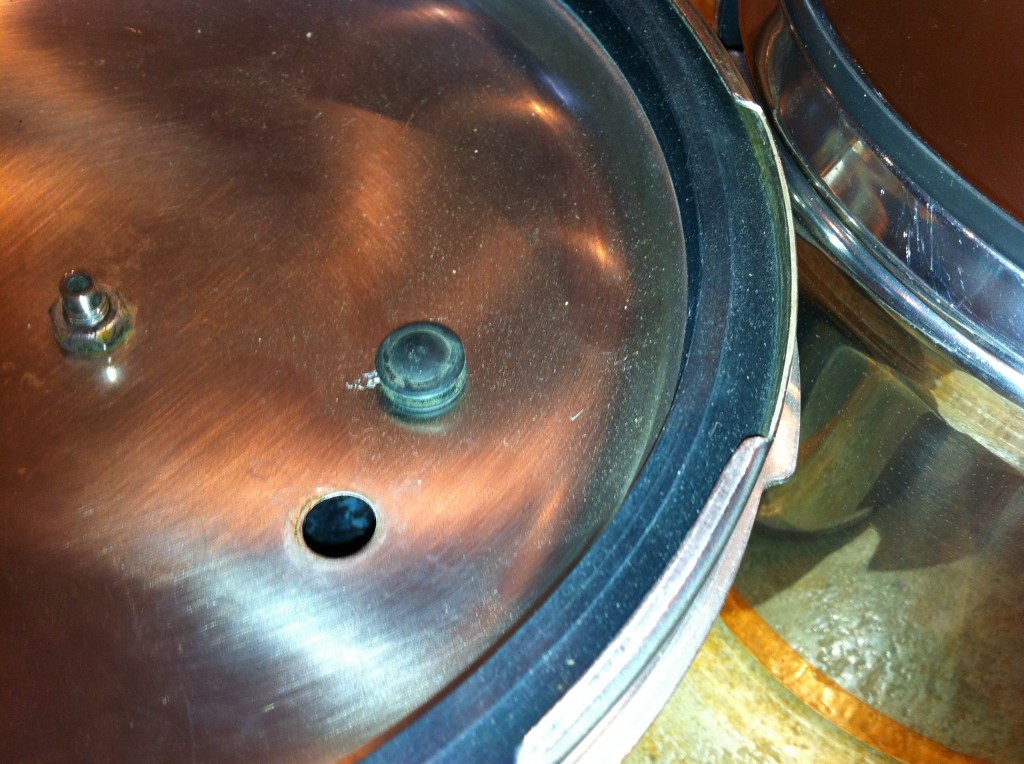Sometimes, handles that have been in use for years can be very difficult to get off so you can replace them with new ones. Frequently, screws and nuts will rust together, making them impossible to get apart (the nut simply spins). Take this one for example. Years of grease make even the handles reluctant to separate.
Unfortunately, in this case I had to break apart the handle to expose the screws so I could twist them apart, and the screws themselves broke off rather than unscrew.
In this case, I used a screwdriver to pry the handle halves apart until one of them broke off. I tried prying the rest of the Bakelite off, but the handle spline started to deform. So I placed the handle against a hard surface (concrete) and repeatedly hit it with a hammer until all the Bakelite was off. Then I used two pairs of pliers to try to unscrew the screws, which broke off.
Sometimes it simply isn’t possible to save the old handle or hardware when removing them.

